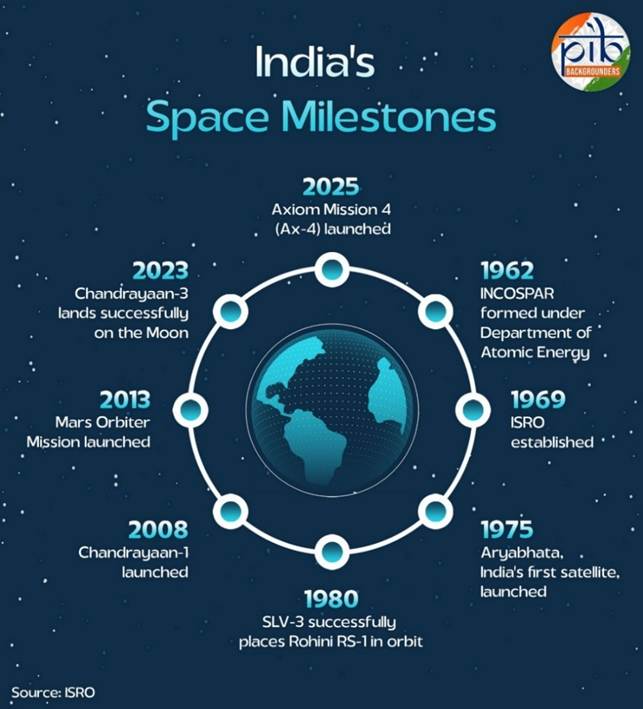From launching a modest sounding rocket in 1963 to becoming a key player in global space exploration, India has come a long way. Today, the Indian Space Research Organisation (ISRO) stands at the forefront of innovation and scientific achievement, steering a rapidly evolving space programme that now includes international collaborations, private sector participation, and ambitious plans for human spaceflight and planetary missions.
A major milestone in India’s journey is the upcoming launch of the NASA-ISRO Synthetic Aperture Radar (NISAR) mission. Scheduled for 5:40 PM on July 30, NISAR represents the first joint Earth observation project between India and the United States. The satellite will be launched aboard the GSLV-F16 rocket, marking ISRO’s inaugural GSLV mission to a Sun Synchronous Polar Orbit. NISAR is equipped with dual-frequency radar payloads—the L-band from NASA and the S-band from ISRO—enabling it to capture high-resolution, all-weather, day-and-night images of Earth’s surface every 12 days. This data will be crucial for global environmental monitoring, including seismic activity tracking, ice sheet movement, and shoreline changes.
India also marked a historic achievement this year in human spaceflight. Group Captain Shubhanshu Shukla became the first Indian to visit the International Space Station (ISS), serving as the mission pilot on Axiom Mission 4 (Ax-4). Launched on June 25 and returning on July 15, Shukla spent 18 days aboard the ISS, conducting groundbreaking experiments in microgravity. These included studies on algae growth, tardigrade survival, seed germination, muscle regeneration, and human-computer interaction. His return was celebrated across the country and seen as a turning point for India’s aspirations in human space exploration, particularly the upcoming Gaganyaan mission.
Slated for launch in early 2027, Gaganyaan aims to send Indian astronauts into Low Earth Orbit aboard ISRO’s LVM3 launch vehicle. Four Indian Air Force officers, including Shukla, have been selected as astronaut-designates and are currently undergoing extensive training. Meanwhile, ISRO is conducting critical tests, including the development of a human-rated launch vehicle, a crew module, and an escape system. The first uncrewed test mission is expected to launch later this year from the Sriharikota spaceport.
India’s achievements extend beyond Earth orbit. Its Chandrayaan programme has placed the country among the world’s leading lunar explorers. Chandrayaan-1, launched in 2008, confirmed the presence of water molecules on the Moon. Chandrayaan-2, launched in 2019, contributed valuable orbital data despite the failure of its lander. The breakthrough came with Chandrayaan-3 in 2023, which successfully soft-landed near the lunar south pole, making India the first nation to reach this region. ISRO is now preparing for Chandrayaan-4, which will attempt a complex lunar sample return mission using dual launches and in-space docking. A follow-up mission, Chandrayaan-5, is also in the works to further expand India’s lunar surface science.
India’s interplanetary credentials were cemented with the Mars Orbiter Mission (Mangalyaan), launched in 2013. It made India the first Asian nation to reach Martian orbit on its first attempt. Initially expected to last just six months, the mission operated for over seven years, transmitting valuable data about the Martian atmosphere and terrain.
Looking ahead, ISRO is developing Next Generation Launch Vehicles (NGLVs) with a payload capacity of up to 30,000 kg to Low Earth Orbit. These vehicles will feature reusable first stages, improving cost-efficiency and increasing launch frequency. The agency is also working on space docking technology, orbital re-entry vehicles, and satellite servicing systems. Another long-term project is the Bharatiya Antariksh Station (BAS), India’s planned independent space station, targeted for completion by 2035. It will serve as a platform for sustained human presence in space and foster international cooperation in scientific research.
India is also taking strong steps to ensure sustainable space operations. The Debris-Free Space Missions (DFSM) initiative, launched in 2024, sets an ambitious goal of achieving 99% post-mission disposal success by 2030. This initiative is supported by India’s growing Space Situational Awareness (SSA) infrastructure, including the IS4OM system, which monitors and mitigates threats from space debris.
International collaborations remain central to India’s space strategy. The LUPEX mission with Japan aims to explore the lunar south pole. The TRISHNA satellite, developed with France, will monitor Earth’s temperature and water cycles. India has also partnered with the European Space Agency (ESA) for the Proba-3 mission, launched aboard a PSLV. Meanwhile, NISAR marks the strongest cooperation to date with NASA. Commercial partnerships are also expanding, with SpaceX’s Starlink receiving approval in 2025 to offer satellite internet services in India in collaboration with telecom firms Airtel and Reliance Jio.
Domestically, India’s space sector is experiencing a startup boom. Over 328 startups are now active in areas ranging from satellite manufacturing and propulsion to space analytics and launch services. The liberalization of foreign direct investment (FDI) and policy support under the India Space Policy 2023 have encouraged private sector innovation and participation.
Several high-profile missions are on the near-term horizon. These include the next crew escape system test for Gaganyaan (TV-D2), the PSLV-C61/EOS-09 Earth observation satellite launch, and the LVM3-M5 mission carrying the BlueBird Block-2 commercial satellite payload. Further missions to Mars, Venus, and advanced lunar exploration under Chandrayaan-5 are also being prepared.
These efforts fall under the broader Space Vision 2047 framework, which outlines India’s long-term goals in space. These include human missions to the Moon by 2040, the establishment of a national space station, and India’s emergence as a global leader in interplanetary science, exploration, and commerce. (PIB)














